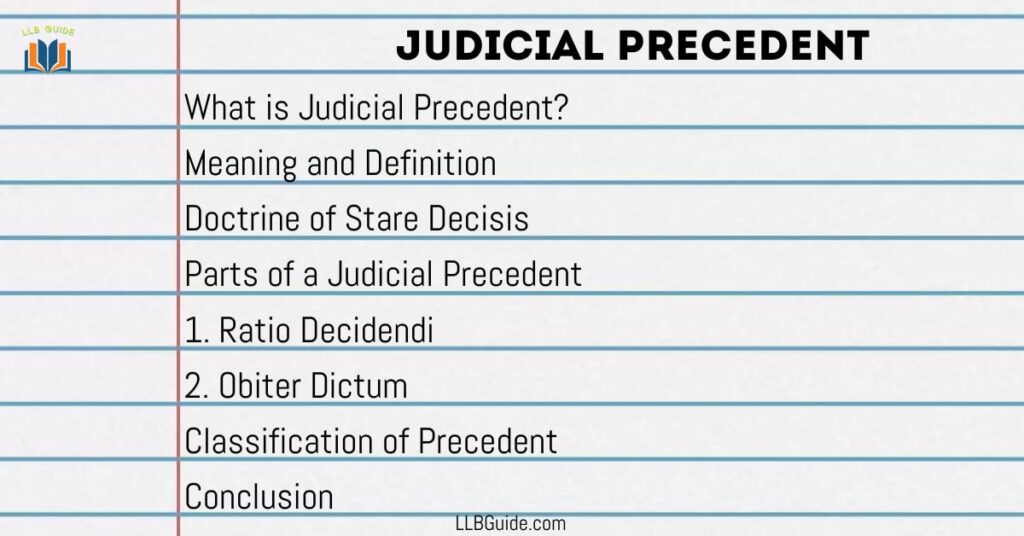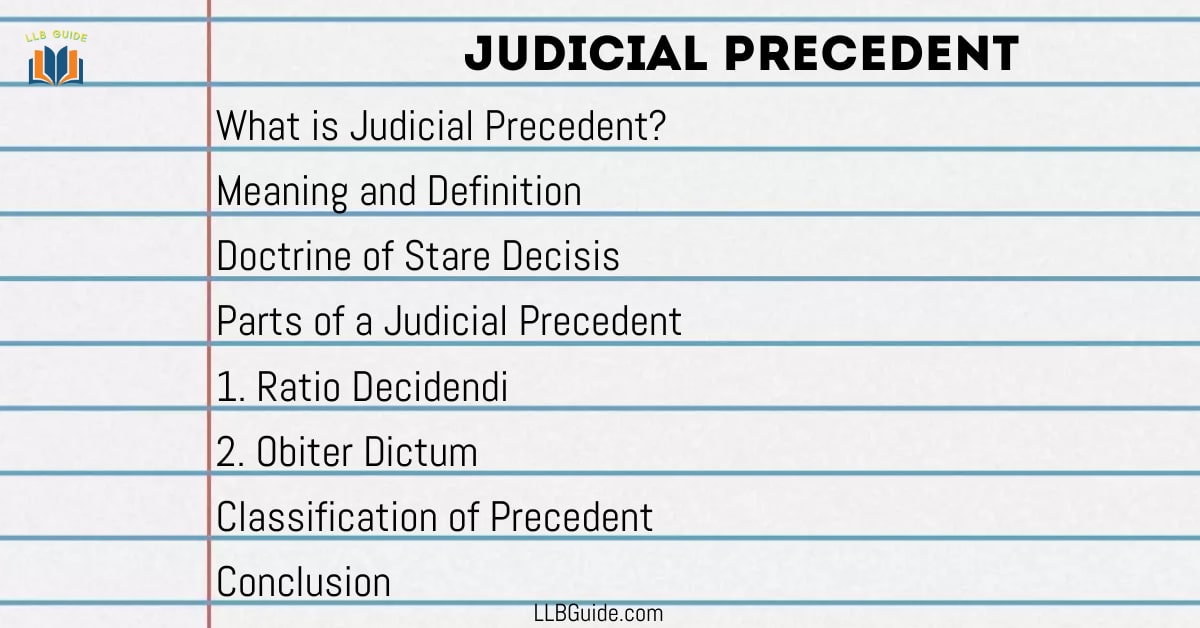The judicial precedent stands as a crucial tool for the judges during the decision-making process, serving as both a guiding principle and a legal foundation. It involves judges setting forth new principles or rules, which then become reference points for future cases, carrying binding authority over lower courts. Judicial precedent as a source of law also.

What is a Judicial Precedent?
A Judicial Precedent refers to the decision of the Court. Judicial precedent in law is like following a roadmap left by judges before us. This idea is crucial in common law systems, where past rulings help shape how future cases are decided. Precedent keeps our legal system on track, helping us navigate through the complexities of justice with clarity and fairness.
Common law countries England, USA, Canada, Australia, India, and Pakistan follow precedents.
Continental countries France, Germany and Italy etc, do not follow precedents.
Precedent Meaning
Precedent in jurisprudence means a behavior previously adopted and it becomes an example or rule for subsequent cases.
Definition of Judicial Precedent
According to the black law dictionary, “Rule of law established for the first time by a court for a particular type of case and thereafter referred to deciding similar cases”.
Salmond states, “In a loose sense, it includes merely reported case law which may be cited & followed by courts”.
According to Gray, “Precedent covers everything said or done, which furnishes a rule for subsequent practice”.
According to Keeton, “A judicial precedent is judicial to which authority has in some measure been attached”.
Doctrine of Stare Decisis
Stare Decisis is a Latin term that means “let the decision stand in its rightful place”. Once a Court has laid down a principle, the other Courts do need to follow the principle in a similar matter of fact. It helps to maintain consistency, uniformity, and expediency.
According to the rule of Stare Decisis when a decision of the Court contains a new principle then it is:
- Binding on Subordinate Courts,
- Persuasive before Equivalent Courts.
Parts of a Judicial Precedent
There are two parts of a precedent which are:
- Ratio decidendi
- Obiter dictum
1. Ratio Decidendi
Ratio decidendi is a Latin term that means ‘the reason for deciding’. It includes the rule or principle established through the decision-making process. This principle holds relevance for all future judgments involving similar factual scenarios. The ratio decidendi carries binding authority over all lower courts within the jurisdiction. The rationale or grounds for rendering a decision are derived from the case’s facts and subsequently applied to all similar cases, forming the foundation for recognizing a specific decision as a precedent.
2. Obiter Dictum
Obiter dictums are legal statements made within a judgment that do not constitute the essential reasoning for the decision. Put simply, they are incidental remarks lacking binding authority. While they often shape judicial thinking, over time, they may evolve into the decisive legal rationale.
Classification of Precedent
Following are the types of judicial precedent:
- Authoritative Precedent
- Persuasive Precedent
- Original Precedent
- Declaratory Precedent
1. Authoritative Precedent
Authoritative Precedents are also known as binding precedents. Every order of the higher Courts is an authoritative precedent. A lower Court is always bound to follow the precedent set by a higher Court.
The authoritative precedent is further divided into types:
1. Absolute Precedent
Absolute precedents are those precedents that are legally binding to be followed irrespective the judge supports them or not.
2. Conditional Precedent
Conditional precedents may include such precedents which can be ignored in particular circumstances.
2. Persuasive Precedent
Persuasive precedents are those precedents that are not legally binding to be followed, it’s the discretion of the judge to follow it or not.
3. Original Precedent
Original precedent refers to a newly created precedent. When a Court by its discretion passes an order and sets down a new judicial precedent it is called an original precedent.
4. Declaratory Precedent
Every precedent in which a Court declares or utilizes existing or original precedent is called a declaratory precedent.
Conclusion
Judicial precedent involves judges establishing new rules or principles in their decisions, which then become binding for similar cases in the future, particularly for lower courts.
FAQs
What is a precedent in simple terms?
It is a rule for subsequent practice settled by the Court.
What is the judicial precedent of Botswana?
Judicial precedent is a source of law in Botswana.
What is a judicial precedent and its kind?
Judicial precedent means decisions of the Courts, its kinds include authoritative and persuasive precedents and original and declaratory precedents.
#Judicial #Precedent #LLB #Guide







